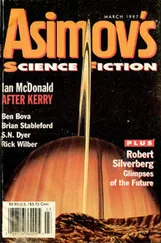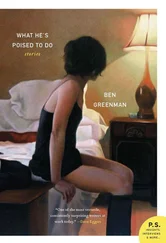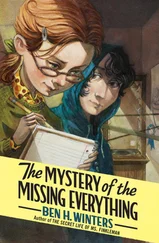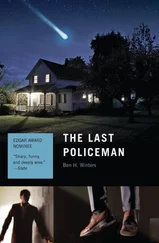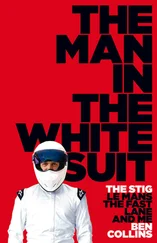An experiment? The word went icily through William.
After two days of rain, the sun and heat had returned. The afternoon cooked the inside of the car. William found Tom’s Charger parked right outside his studio, fender now double dented. He went inside and knocked on the door, once, then a break, then again, as if it was a secret code. He heard shifting and scraping and then Tom came to the door and opened it. “Who is it?” he said, though he saw William’s face. Tom’s hair was in an uproar.
“Hey there,” William said. “I was just driving by. Thought I’d stop in to say hello.”
“Busy,” Tom said.
“Yes, I would like to come in,” William said. Tom opened the door a little more, maybe a foot wide, and William pushed his way in. Chaos possessed the studio: pencils snapped in half and disarranged on the desk, books open upside down next to beer bottles. The only work visible was a large-scale oil painting of one of Tom’s charts — a gradually descending line titled “How Well You Understand This Graph Over Time.”
“Wow,” William said, sitting down on the narrow sofa. “The place looks good.”
“Yeah,” Tom said. “I’ve been busy. But nice to see you. It’s been a while.”
“Not really,” William said. “Stevie’s thing was just last week.”
“It was?” Tom said.
“How did that go?” William said. “Last I saw, you were doing pretty okay with that girl by the bar.”
Tom bunched his brow and searched for the memory. “Katy? Karen? I don’t know. It was a twenty-four-hour flu. She was a nice girl, if you like that kind of thing, but I had to get back to work.”
“Right,” William said. “I see. What are you working on?”
“‘New pieces’ is what I’ve been telling people. But that’s not exactly true. I’ve been going through old work and reconnecting with it. Sometimes I’ve been pulling it into a different medium.” Tom pointed across the room. “Like that canvas over there. When I have to repaint the graphs, I remember them completely, in ways I thought weren’t possible anymore.”
William hunched forward and leaned his forearms on his knees, a technique he’d seen TV cops use to put suspects at ease. It was time to get what he’d come for. “Can I ask you something, Tom? You know that graph? The one about how much fire liked paper?”
Tom had started off toward the canvas. “Of course I know it. I made it. To me, it’s part of a larger comedy about the human arrogance that makes us think we control things — or rather, our refusal to believe what we’re shown repeatedly and conclusively, which is that we control nothing. I don’t believe in God, but I believe in the universe. And I believe that when the universe looks down upon us, it doesn’t see a species with an acceptance of its fate. It sees a species raging against that fate, and maybe it admires that stubbornness just a little.”
“Right,” William said. The sense that he was not quite listening was strong enough in his tone that Tom turned around. “I was out by the warehouse where you had your old studio,” William said.
“Oh?” There was a light in Tom’s eyes that seemed to make it difficult for him to see what was around him. “Why?”
“I wanted something from the alleyway. When I was out there, I talked to someone who saw you.”
“Who saw me?” Tom repeated.
“Who saw you going into the building the day of the fire.”
Tom was, all at once, as still as a Buddha, head down. He spoke finally, in a hushed voice that William couldn’t hear at first. William moved closer. “Cranston.”
“What?”
Tom’s head snapped up. “That was the name of my psychology professor in college. He used to talk about how people project their own negative ideas onto others. He wrote a whole book about it. He said that suspicion was like a black butterfly, and that what darkened it was the shadow of the person looking.”
“Okay,” William said. “The next time I’m in a library or a bookstore, I’ll check it out.”
“You could use a copy right now,” Tom said. Now he was staring at William intently. “Unless I’m wrong, you’re accusing me of something.”
It sounded stupid when Tom said it. “No,” William said. “Not accusing. Just being overly curious.”
“I’ll say. Can I ask how you know about the fire graph?”
“You must have mentioned it to me.”
“And yet, I didn’t,” Tom said.
William’s scalp tightened. “Never mind. We don’t have to talk about this.”
“We don’t have to do anything,” Tom said, his voice louder. “We all have choices. So what I’d like to know is why you chose to end up in my studio on a day I’m teaching, and why you somehow found your way into a folder that I’m not showing anyone.” Now he was almost thundering. “How does a man come to be in a place like this, looking at things he shouldn’t?” He paused, as if at the top of a hill, and then started down it. “And not looking at them alone, either.”
Silence sealed the room. William sat down. “Oh,” he said. “That. It’s not happening anymore.” He paused.
“I’m not going to say anything to Lou or anyone else,” Tom said. “It doesn’t matter to me who you spend your time with. What does matter to me is what you’re saying right now.”
William struggled for a foothold. “But you were there that morning, right? In the studio?”
“I was looking for something,” Tom said. “I found it and I was gone from there by noon. When was the fire? Early evening?”
“I don’t know.”
“That might be useful information when you’re building a case,” Tom said. He picked up a brush, pointed the handle at William. “I don’t want to talk about this anymore. The next time we meet, let it be under better circumstances.” He turned his back on William, lifted the brush to his canvas, left it there to make a growing point. When William’s hand was on the doorknob, he spoke again. “And count yourself lucky that there will be a next time,” he said. “I don’t know if I should feel proud or ashamed that I’m letting you get away with acting reckless like this.”
“Like I said, it’s not happening anymore.”
“Not that,” Tom said. “I mean the way you treated me.” He turned back to the canvas and painted a horizontal line that ran to the end of the canvas, where it went straight down along the edge. William went out to sit in his car and wonder what he had done — or rather, why he had done it. He had misread the available evidence and then perpetuated the delusion just because it shone brighter than everything around it. It was a distraction from the blunt, dull expanse of the rest of his life. Without Emma, he had entered a kind of poverty. The currency was energy, and he was not able to hoard it or spend it. He turned on the radio and left it tuned between stations, trying to make out the words that bobbed to the surface of the static.
Four days later, out in Jerroldtown, police surrounded the home of a sixty-two-year-old retired professor named Thomas Lareaux, who promptly came to the front door with a gun. Lareaux fired at an officer, who fired back. Wounded, he fell to the ground. He was arrested and placed in an ambulance. One wall of his small house, according to a department spokesperson, was papered over with photographs of the buildings that had been set on fire over the past months, including the bus station, the hardware store, Sunny Isles Marina, and the East Side warehouse. The car dealership and Birch Mutual were not among them. Lareaux drove a blue pickup truck, said an undercover policewoman, who may well have driven a black Pontiac.
Lareaux was scheduled to be arraigned Thursday afternoon. William cut short his meeting with Wallace out at the lot and picked up Christopher at school. “Special unplanned stop,” he said.
Читать дальше



